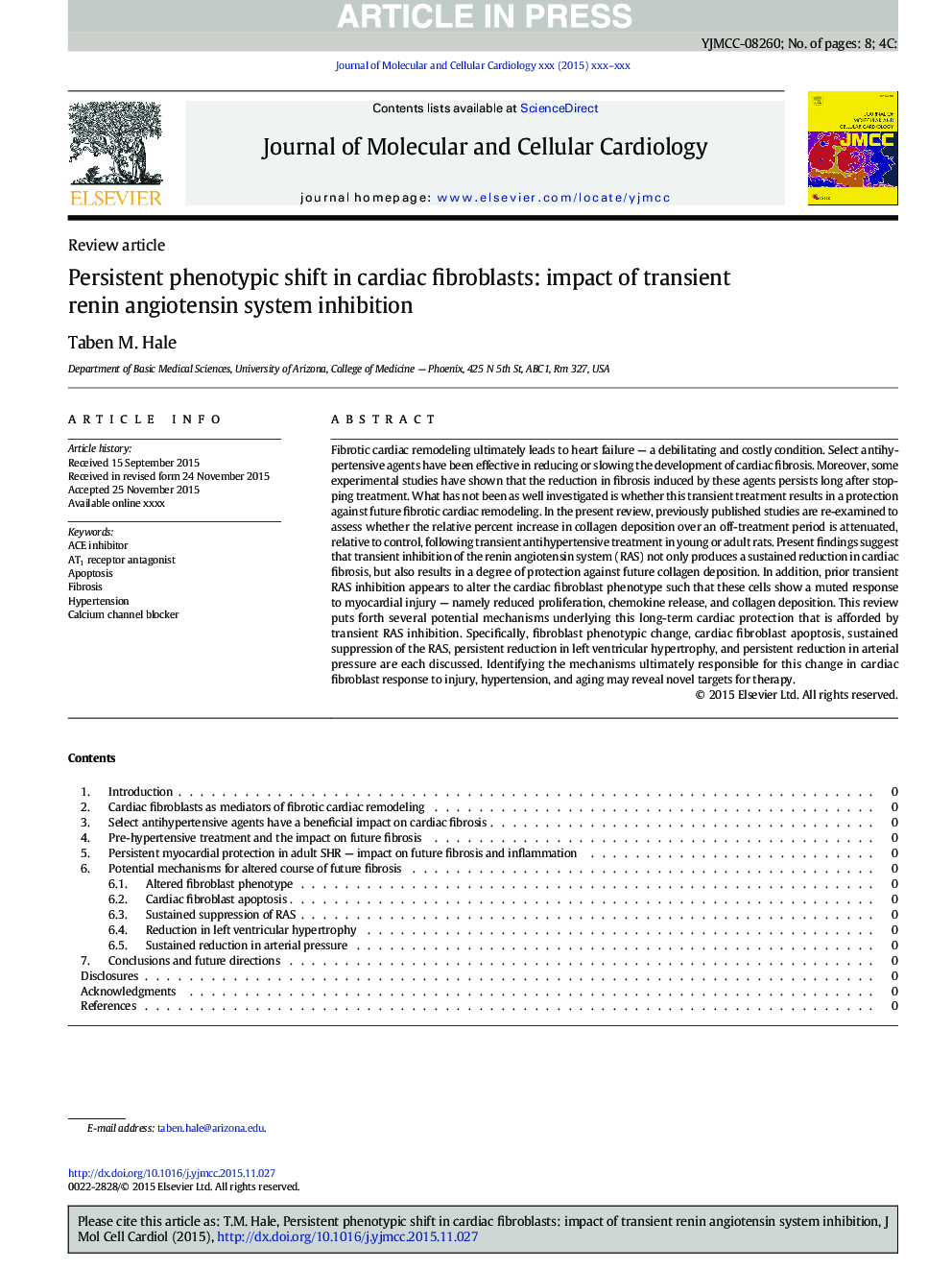| کد مقاله | کد نشریه | سال انتشار | مقاله انگلیسی | نسخه تمام متن |
|---|---|---|---|---|
| 8473875 | 1550413 | 2016 | 8 صفحه PDF | دانلود رایگان |
عنوان انگلیسی مقاله ISI
Persistent phenotypic shift in cardiac fibroblasts: impact of transient renin angiotensin system inhibition
ترجمه فارسی عنوان
تغییر فنوتیپ پایدار در فیبروبلاست های قلب: تأثیر مهار سیستم گذرنده ی آنژیوتانسین رنین
دانلود مقاله + سفارش ترجمه
دانلود مقاله ISI انگلیسی
رایگان برای ایرانیان
کلمات کلیدی
موضوعات مرتبط
علوم زیستی و بیوفناوری
بیوشیمی، ژنتیک و زیست شناسی مولکولی
بیولوژی سلول
چکیده انگلیسی
Fibrotic cardiac remodeling ultimately leads to heart failure - a debilitating and costly condition. Select antihypertensive agents have been effective in reducing or slowing the development of cardiac fibrosis. Moreover, some experimental studies have shown that the reduction in fibrosis induced by these agents persists long after stopping treatment. What has not been as well investigated is whether this transient treatment results in a protection against future fibrotic cardiac remodeling. In the present review, previously published studies are re-examined to assess whether the relative percent increase in collagen deposition over an off-treatment period is attenuated, relative to control, following transient antihypertensive treatment in young or adult rats. Present findings suggest that transient inhibition of the renin angiotensin system (RAS) not only produces a sustained reduction in cardiac fibrosis, but also results in a degree of protection against future collagen deposition. In addition, prior transient RAS inhibition appears to alter the cardiac fibroblast phenotype such that these cells show a muted response to myocardial injury - namely reduced proliferation, chemokine release, and collagen deposition. This review puts forth several potential mechanisms underlying this long-term cardiac protection that is afforded by transient RAS inhibition. Specifically, fibroblast phenotypic change, cardiac fibroblast apoptosis, sustained suppression of the RAS, persistent reduction in left ventricular hypertrophy, and persistent reduction in arterial pressure are each discussed. Identifying the mechanisms ultimately responsible for this change in cardiac fibroblast response to injury, hypertension, and aging may reveal novel targets for therapy.
ناشر
Database: Elsevier - ScienceDirect (ساینس دایرکت)
Journal: Journal of Molecular and Cellular Cardiology - Volume 93, April 2016, Pages 125-132
Journal: Journal of Molecular and Cellular Cardiology - Volume 93, April 2016, Pages 125-132
نویسندگان
Taben M. Hale,
